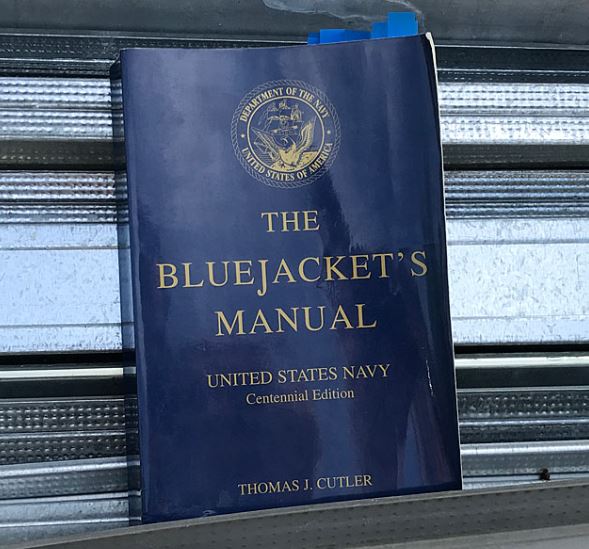Why the US Navy Blue Jacket’s Manual Should be Added to Everyone’s Bookshelf

If there is a list manual out there that might be considered the perfect survivor guide, the US Navy Blue Jacket’s Manual has to be high on that list. Look below and read examples of what it contains:
In addition to non-tangible skills like leadership and communication, the Blue Jacket’s Manual provides information on a variety of physical skills like knot tying, navigation and first aid. The benefit to civilians with a manual like this is that it contains the distillation of all the trial and error the Navy went through to get to this basic information.
They’ve spent millions of dollars on training programs and literature to create the ultimate how-to on being in the Navy. A byproduct of this is that the skills offered in the manual have been tested and proven to work. While it might not always be the most high speed, lightweight method, anything shown in this manual has been proven in both training and combat situations. With much of the industry being focused on getting “Military Grade” or “Mil-Spec” gear, why should your training manuals be any different?
The navigation section of the manual is one I read through multiple times. It highlights different methods of navigating and stresses the importance of always having multiple methods. Navigation is one of those skills that when done correctly doesn’t really dazzle anyone. After all, it’s getting from point A to point B. However, failing to navigate properly, especially in an emergency situation, could mean the difference between life and death.
One section in particular stuck out to me that I wouldn’t have expected and that’s the cleaning section; mostly dealing with cleaning performed when living on a ship. The underlying philosophy behind the section is that if you’re constantly cleaning and maintaining both your quarters and equipment, it’s much less likely to fail on you.
My favorite portion of this section deals with “Field Days,” which I’m sure brings back a rush of memories for any Veterans reading this. A Field Day is when all hands turn up to clean inside and out; covering everything on the ship. This includes corners, fixtures and places that may get missed with standard cleaning. I’ve begun to adopt more of a proactive cleaning schedule after reading this manual and I’ve definitely planned my own personal Field Day at home in the near future.
This is obviously a thick manual with a lot of information and it is the type of book you want to refer to time and again. Therefore, if the book gets a little worn over the months and years that is good! It means you are using it, making notes in it, bending pages to remember a few things.
In other words, The US Navy Blue Jacket’s Manual is being used and is invaluable! That is what is important! To read more and find out where you can get your own go to Imminent Threat Solutions.
Featured Image via Imminent Threat Solutions
Pages: 1 2
I have an older copy. Post WW2.
I have an older copy. All homes should also have a boy scouts manual.
I love the two copies that I have!
I have an older version
Got mine
Still have my dads. 1942
Can someone who has this book AND the SAS survival handbook do a comparison and let us all know . Will keep to my trusted SAS in the meantime .
I have mine from boot camp in ’79. I also have my uncle’s from 1940. Interesting reading they are.